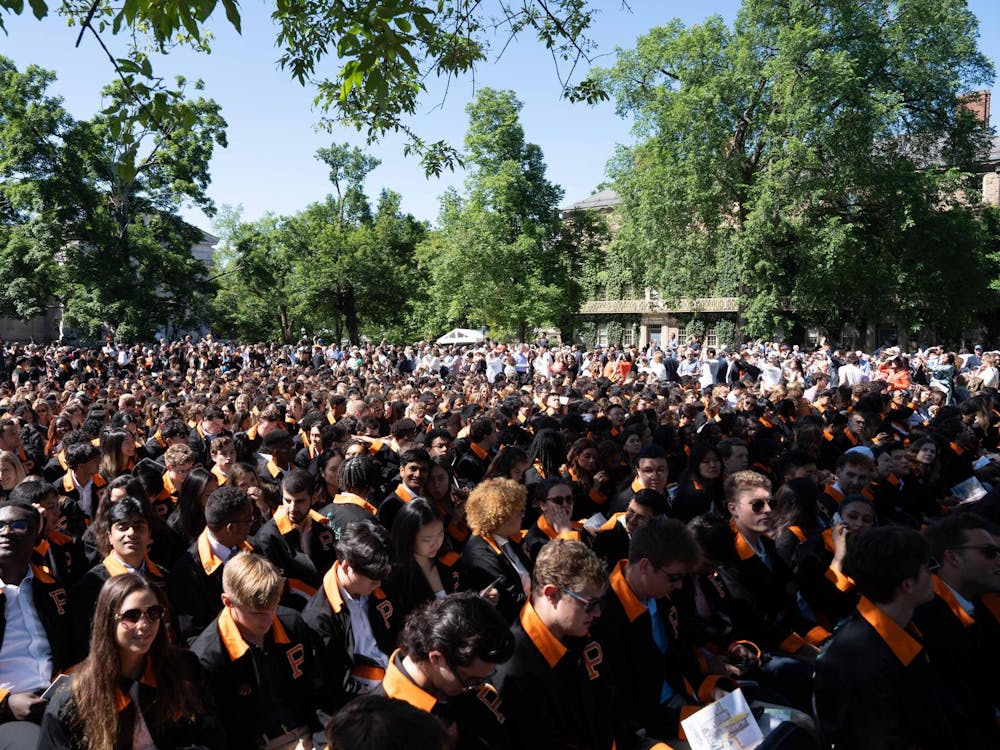In theory, the purpose of problems sets should be to reinforce students’ skills outside of class by application of what was taught in lecture. Problem sets in college do perhaps require more critical thinking than the rote homework problems given in high school, but the main purpose is still practice. Assessments, on the other hand, gauge a student’s progress, concretely measuring what they know and how accurately they apply it. Some classes confuse the distinction between these two concepts by implementing a strict “no collaboration” homework policy that prevents students from discussing problem sets together or checking over the answers. This confusion severely limits students from practicing their skills outside of class with accuracy because they may complete entire problem sets with the wrong knowledge, thus practicing mistaken methods until they become bad habits.
In my Princeton experience so far, I’ve had five classes with “no collaboration” homework policies. In some instances, for example in computer science classes, I believe no collaboration is justified. Assignments, which are the closest equivalent to problem sets in other classes, are distinguished by the fact that students can check if they were right in an assignment — either the program works or it doesn’t work. Students are much less likely to implement a wrong algorithm throughout the entire program and still come up with the right answer. Some classes and assignments even have a partner programming provision — students may work with one other person and bounce ideas off of one another, correcting each others’ mistakes. Because COS assignments can be self-checked, it is highly unlikely that students will learn and practice erroneous knowledge.
On the other hand, in two economics classes I’ve taken so far, the “no collaboration” policy only caused confusion. To have “no collaboration” policies for paper-and-pencil problem sets meant that I had no idea if I had done all the problems incorrectly. For those classes, students wouldn’t even know if they were approaching problems the right way until the solutions came back. In particular, if the solutions were unclear or inadequately explained, then students were completely on their own about how the problem was solved. This ambiguity regarding concepts taught in class would extend all the way to exams. Only then would we realize if we were learning things correctly — by the check marks or X’s on a midterm that was worth 30 percent of our entire course grade.
In another econ class I took without a “no collaboration” policy, that was never the case. I was never unclear about the material we learned in class because I was able to check my methods with other students through problem sets. It wasn’t as if we simply copied off one another either — we argued over every problem, drawing conflicting diagrams and trying to understand what was right or wrong about each one, and then finally came to a conclusion through cooperative discussion. In that class, I felt that I understood the material much more than I did in the classes with no collaboration policies.
I understand where professors are coming from — it’s not morally acceptable to have students copy straight off one another’s papers. However, that kind of blatant cheating is something that will definitely be caught on the midterm or the final, tests that are worth a significantly greater portion of the final grade than a few problem sets. The professor of one of the econ classes with a “no collaboration” policy also justified it this way: He said that he wanted to evaluate students’ individual performances without outside influence. That is a valid goal, but one that is much better attained through testing, where professors can be 100-percent certain that students aren’t relying upon preceptors or the Internet or other students. He was essentially treating problem sets like exams; instead of allowing students to practice their skills, every problem set was a mini-exam.
With “no collaboration” policies, it becomes much harder to learn the material, which should be the ultimate goal of the class. Time and time again, studies have shown that collaborative learning helps students retain information better than isolated study.In Virginia Tech’s Journal of Technology and Education, a study titled “Collaborative Learning Enhances Critical Thinking” argues that “group diversity in terms of knowledge and experience contributes positively to the learning process.” Problem sets are a valuable part of the learning process. They are practice for applying the concepts that will be tested on the midterm, on the final and perhaps even in real life on the job. A “no collaboration” policy on homework eliminates that benefit.
Barbara Zhan is an Operations Research and Financial Engineering major from Plainsboro, N.J. She can be reached at barbaraz@princeton.edu.







